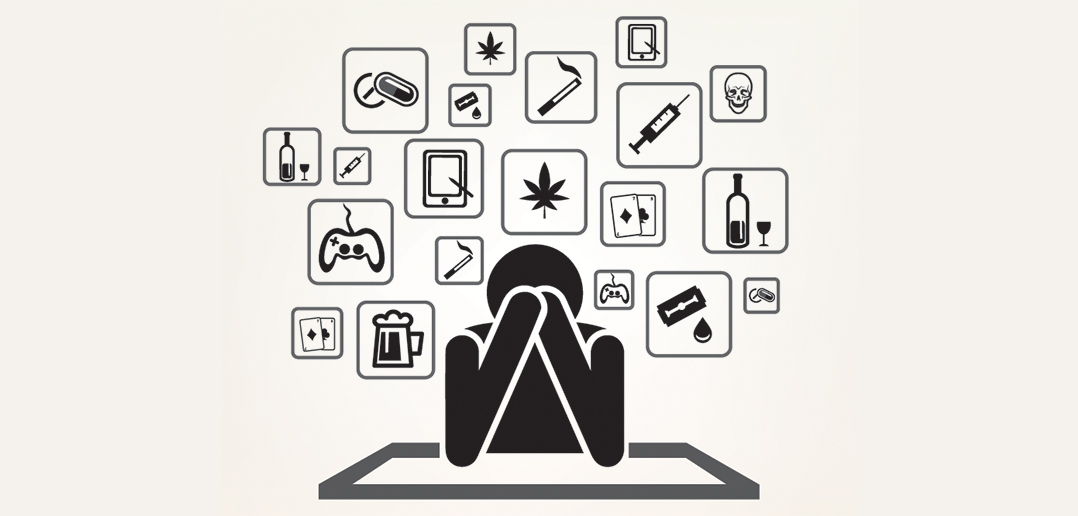Addiction (or dependency) to chemical substances is highly prevalent in society. It does not discriminate. It is a universal phenomena. It’s also true, that addiction manifests in many forms – perhaps as many forms as there are people. Behavioural, or ‘Process Addictions’, are arguably just as common as substance addictions. I think there is a substantial similarity between chemical addiction and obsessive compulsive behaviours, even behaviours we think are just ‘bad’ habits or ‘coping mechanisms’. Process addictions include behaviours such as binge eating (or eating to feel better), not eating to feel better, having sex, self-harming, excessive or impulsive shopping (esp. online), gambling, playing video games, excessive exercise, controlling behaviours, anger, and the list goes on. A behaviour is only considered a disorder or “illness” – however – if it meets a few criteria. Generally, a behaviour is considered medically or psychologically problematic when the harm associated with it outweighs the apparent benefits. At university, I was taught that a behaviour becomes problematic if:
- it cause the individual Dysfunction
- it is Dangerous to the self or others
- it causes the individual Distress, and/or
- it is considered statistically rare compared to the majority of a population.
Substance use may be a problem when someone:
- has difficulty meeting responsibilities at home, work or school
- has tried unsuccessfully to cut down or quit.
- uses more than they intended despite wanting to stop
- has recurring problems with health, safety, relationships, finances or the law through their substance use
- needs the substance to cope with everyday life or particular experiences
- organises other events or needs around their substance use
- needs increasing amounts of the substance to have the same effect
- feels sick or moody without the substance, but feel normal when they use again
- find themselves using as a way to maintain friendships or relationships.
The harm associated with drug use can occur in many ways, depending on:
- how you get hold of the substance, such as finding the money or risks in buying the substance
- how you put the substance into your body, such as drinking, eating, inhaling, smoking, snorting or injecting
- the effect of the drug on your body, through increased heart rate, unconsciousness or long-term liver damage
- what you do while under the influence of the drug , through increased risk taking or neglect of other responsibilities
- what happens after you use, which may include depression when ‘coming down’ or withdrawal symptoms.
Symptoms of Addiction

- Recurrent use of a substance, or engagement with an activity, that leads to impairment or distress, is the core of addictive disorders. The clinical diagnosis of an addiction is based on the presence of at least two of a number of features:
- The substance or activity is used in larger amounts or for a longer period of time than was intended.
- There is a desire to cut down on use or unsuccessful efforts to do so.
- Pursuit of the substance or activity, or recovery from its use, consumes a significant amount of time.
- There is a craving or strong desire to use the substance or engage in the activity.
- Use of the substance or activity disrupts obligations at work, school, or home.
- Use of the substance or activity continues despite the social or interpersonal problems it causes.
- Participation in important social, work, or recreational activities drops or stops.
- Use occurs in situations where it is physically risky.
- Use continues despite knowing it is causing or exacerbating physical or psychological problems.
- Tolerance occurs, indicated either by need for markedly increased amounts of the substance to achieve the desired effect or markedly diminished effect of the same amount of substance.
- Withdrawal occurs, manifest either in the presence of physiological withdrawal symptoms or the taking of a related substance to block them.
The severity of the condition is gauged by the number of symptoms present. The presence of two to three symptoms generally indicates a mild condition; four to five symptoms indicate a moderate disorder. When six or more symptoms are present, the condition is considered severe.
Addiction Recovery – Treatment and the Process
Have you heard of the ‘Stages of Change Model’? It looks like this …

I’d say the first step is ALWAYS to become aware that you may have an addiction, compulsive behaviour, or some kind of dependency on something that is harmful or potentially problematic to your health, relationships, finances, self-respect, education, vocation/employment, safety, reputation etc. Identifying and accepting this may be very, very challenging. You may find yourself swinging back on forth on this one for a while. I encourage you to play around with the idea of seeking help. Talk to a trusted friend or family member. It’s really interesting how many people will reflect back to us, “yeah, I thought something might be going on there”. This can feel like a shame-attack but it could also be very liberating.
Talking to your GP or doctor is conventionally the first step when and if you’re ready to take an active first step towards self-discovery or even recovery. Counselling, psychotherapy, group therapy, community support groups, self-help, research and pharmacology (medication) are all possible avenues for treatment. Of course, the more you accept you have an addictive behaviour, the more you become willing to experience new forms of healing. Do not be discouraged by relapse, backsliding, or the voice in your head. Let them be. You’ve spent many years refining the art of your dependency and it may take many years to heal. The recovery journey is a life journey – it’s exciting and terrifying, and mind-blowing and disheartening. I think one thing I know for sure is, you will always progress in the direction you move toward.
